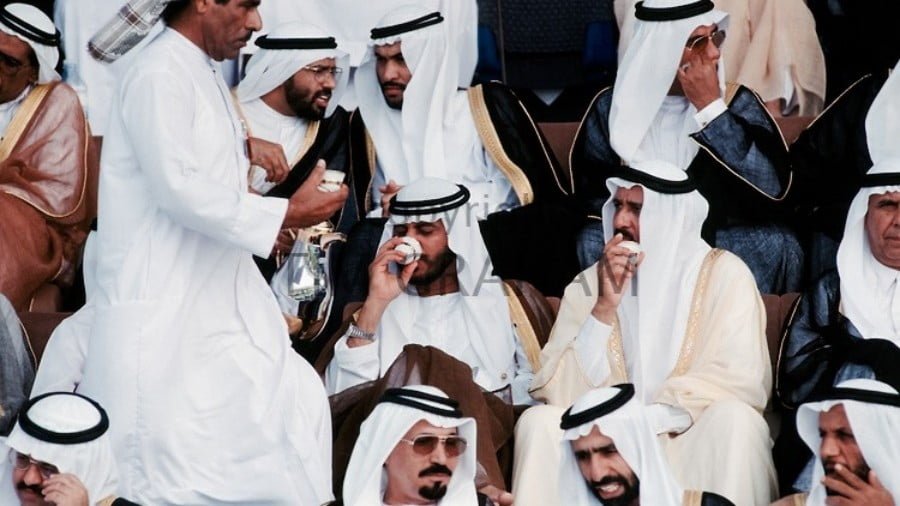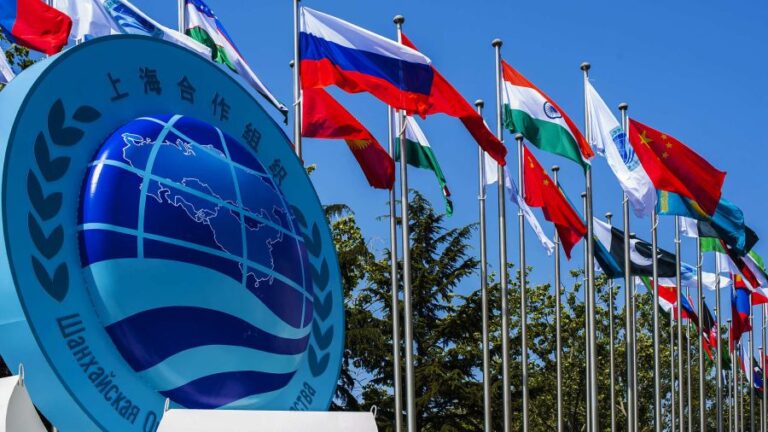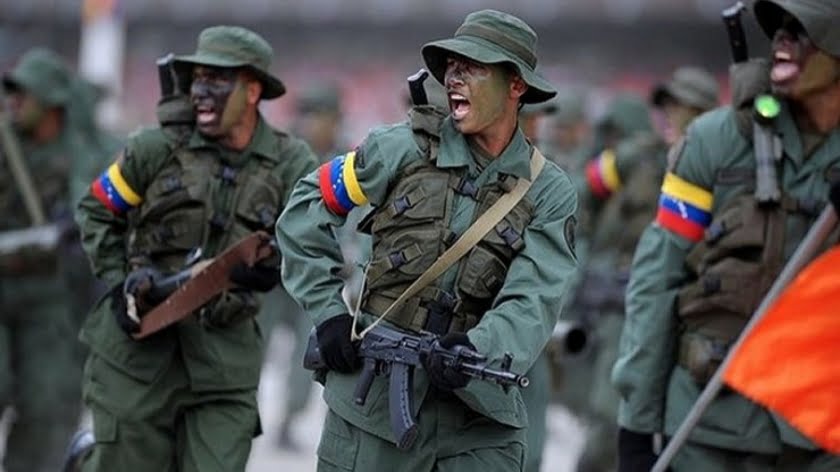What Is ‘Safari Club II’ and How It Can Change Middle East Dynamics
During the Cold War, the Central Intelligence Agency convinced certain European and Middle Eastern allies to establish an informal intelligence alliance whose links to the United States would be “plausibly denied” in typical CIA parlance. In 1976, a group of pro-Western intelligence agency directors secretly met at the Mt. Kenya Safari Club in Nanyuki, Kenya to hammer out an informal pact designed to limit Soviet influence in Africa and the Middle East. The group met under the auspices of Saudi billionaire arms dealer Adnan Khashoggi, Kenyan President Jomo Kenyatta, and US Secretary of State Henry Kissinger. Although Khashoggi was present at the first meeting of what soon became known as the “Safari Club,” Kenyatta and Kissinger were not present at the inaugural spymasters’ meet-up.
Signing the original charter of the Safari Club in Kenya were Count Alexandre de Marenches, director of the French Service de Documentation Extérieure et de Contre-Espionnage (SDECE) foreign intelligence agency; Kamal Adham, the chief of Al Mukhabarat Al A’amah, the Saudi intelligence service; Egyptian Intelligence Service director, General Kamal Hassan Aly; Ahmed Dlimi, the head of Morocco’s intelligence service; and General Nematollah Nassiri, the head of Iran’s SAVAK intelligence agency. There are indications, but no actual proof, that the head of Israel’s Mossad, Yitzhak Hofi, took part in the first Safari Club meeting in Kenya.
The Mt. Kenya Safari Club, founded in 1959, was co-owned by Indiana oil tycoon Ray Ryan, an individual with links to both the CIA and the Mafia; Carl W. Hirschmann Sr., the Swiss founder of Jet Aviation, a global business aviation firm having close ties to the CIA and which was sold to General Dynamics in 2008; and actor William Holden. On October 18, 1977, after the Safari Club had moved its operational headquarters to Cairo, Ryan was killed in a car bombing in Evansville, Indiana. Holden died alone in his Santa Monica, California apartment on November 12, 1981, after he reportedly tripped on a bedside rug, hitting his head on a nightstand and subsequently bleeding to death. Ryan’s murder remains a cold case, while questions continue to surround the unattended death of Holden.
During 1977, Khashoggi took advantage of Ryan’s tax problems with the US government and Hirschmann’s own financial troubles to purchase full control of the Mt. Kenya Safari Club shortly before Ryan’s murder. Due to its location in Cairo, the Safari Club was a key element in recruiting Arab irregulars to fight against the Soviet Union in Afghanistan. Khashoggi was a key player in financing the “Arab Legion” in Afghanistan by drawing on support from the Saudi royal family and Sultan Hassanal Bolkiah of Brunei.
The Mt. Kenya Safari Club continued to play a useful role in clandestine Safari Club meetings, including one on May 13, 1982 between Israeli Defense Minister Ariel Sharon; Sudan’s President Jaafar al-Nimeiri; Sudan intelligence chief Omar al-Tayeb; American-Israeli billionaire Adolph “Al” Schwimmer, the founder of Israel Aerospace Industries; Yaacov Nimrodi, Mossad’s former liaison officer in Tehran to SAVAK; and Mossad deputy director David Kimche.
The actual chief of the Safari Club was, according to some insiders’ accounts, was George “Ted” Shackley, who, as Associate Deputy Director of the CIA for Operations, was the chief of the CIA’s clandestine operations under CIA boss George H. W. Bush. Shackley, whose nickname was the “Blond Ghost,” was fired by Jimmy Carter’s CIA director, Admiral Stansfield Turner. However, Shackley was called out of retirement by Ronald Reagan’s CIA chief William Casey. Acting as a private intelligence operative, Shackley was instrumental in mobilizing the Safari Club’s old SAVAK network in Europe to help craft the infamous Iran-contra affair.
The Safari Club was responsible for much of the West’s clandestine operations against the Soviet Union in conflict zones extending from Afghanistan to Somalia and Angola to Nicaragua. It is ironic that a group of intelligence agencies and guerrilla groups supporting the Houthis in Yemen is now taking a page from the old Safari Club to combat against the United States, Saudi Arabia, Israel, and their proxies in Yemen, the Horn of Africa, and the greater Middle East.
The anti-Saudi Houthi movement in Yemen, whose members adhere to the Zaidi-Shi’a sect of Islam, stand opposed to the rigid fundamentalist practices of Saudi Wahhabism. The Houthis, who are aligned religiously and politically with Shi’a-ruled Iran, have established an external intelligence service under the directorship of Abdelrab Saleh Jerfan. Emulating the Safari Club, Houthi intelligence has entered into informal agreements with Iran’s Islamic Revolutionary Guard Corps (IRGC) or Pasdaran; the Preventive Security Service (PSS) of Palestine; Lebanese Hezbollah’s three intelligence arms, including Unit 1800, Hezbollah’s special operations intelligence branch; and Hamas intelligence, which is based in Gaza but has agents distributed throughout the Middle East. Now that Syrian President Bashar al-Assad has routed most of the jihadist guerrilla armies from his country, with the assistance of Houthi expeditionary force personnel, Syria is better placed to provide military assistance to the Houthi coalition in Yemen. Together, this alliance of anti-Zionist and anti-Wahhabist forces, which could be called “Safari Club II,” is able to penetrate the Saudi-Yemeni border and conduct military operations against Saudi military and government targets in Saudi Arabia’s Asir province.
Ever since the Saudi-led coalition, which also includes troops from the United Arab Emirates, Pakistan, Egypt, Kuwait, Morocco, Sudan, Jordan, and Bahrain, entered the Yemeni civil war in 2015 on behalf of a Saudi stooge government, the Houthis have brought the war home to the Saudis. Houthi forces have entered three Saudi border regions, including Asir, Jizan, and Najran. The Houthis, with the backing of Pasdaran and Hezbollah intelligence, created a Saudi secessionist group, Ahrar al-Najran, or the “Free Ones of the Najran Region.” Najran was, until 1934, part of the Mutawakkilite Kingdom of Yemen, which was ruled by a Zaidi monarch until 1962, when the Yemeni kingdom was overthrown. Irredentists on the Saudi side of the border what to re-unify with Yemen. The Yemeni Hamdanid tribe, which provided the core of support for the former Yemeni Zaidi monarch, have pledged their allegiance to the Houthi-led coalition in Yemen. Houthi intelligence has also conducted reconnaissance of Israeli naval bases across the Red Sea in Eritrea’s Dahlak archipelago and the port of Massawa. Houthis have also conducted surveillance of Saudi and Emirati military operations in the Eritrean port city of Assab. In 2016, Houthi forces reportedly attacked Eritrean naval headquarters in Assab after Saudi forces arrived at the port city. The Houthis may have been aided by yet another Safari Club II ally, the Eritrean opposition group, the Red Sea Afar Democratic Organization (RSADO), which also receives support from Ethiopia.
In 2016, the Houthis successfully carried out an incursion into Asir and captured a Saudi military base, along with a cache of US and Canadian weapons. The Safari Club II sponsorship of a secessionist movement in Saudi Arabia is like the original Safari Club’s support for various insurgent groups, including UNITA in Angola, RENAMO in Mozambique, and the contras in Nicaragua.
Political upheavals in Yemen and Saudi Arabia have resulted in new alliances between the Saudi coalition and the Safari Club II members. On November 4, 2017, Saudi Arabia’s Crown Prince, Mohammed bin Salman, moved to consolidate his political power by arresting several princes of the House of Saud, as well as prominent government ministers, clerics, and businessmen. A helicopter carrying Prince Mansour bin Muqrin, the deputy governor of Asir province, and seven other senior Saudi officials, crashed near Abha in Asir Province, near the border with Houthi-controlled north Yemen. There were several reports that the helicopter was shot down by the Saudis after they learned it was flying to Houthi-controlled Yemen where the prince and his party had been assured of political asylum. A Saudi prince joining the Houthis would have been a major coup for the Safari Club II.
At the same time the Houthis were taking sides in the internal House of Saud turmoil, Houthi intelligence, aided by the impressive signals intelligence capabilities of Hezbollah, intercepted s series of message between former Yemeni president Ali Abdullah Saleh, an erstwhile ally of the Houthis, and the UAE and Jordan, both allies of the Saudis. It turned out that Saleh was negotiating a separate deal with the Saudi-UAE coalition, an act seen as the ultimate betrayal by the Houthis. The Houthis stormed Saleh’s residence in the Yemeni capital of Sana’a and executed him on the spot.
It is noteworthy, as well as ironic, that the Safari Club II is fighting against many of the members of the original Safari Club. Except for Iran, a member of Safari Club II, these include Saudi Arabia, Israel, France, Egypt, Morocco, and the ancillary members of the United States and Sudan. Henry Kissinger, who was a patron of the original Safari Club, now advises Donald Trump’s son-in-law, Jared Kushner, a cipher in the White House for Mossad, on his frequent dealings with the Saudi Crown Prince and other regional players in the Middle East, including the Israelis.
Safari Club II has something the first Safari Club lacked: popular support. The coalescence of interests of the downtrodden people of Yemen, Lebanon, and the West Bank and Gaza, along with the geopolitical security concerns of Iran, and more recently — as the result of Saudi-UAE subterfuge — Qatar, has provided Safari Club II a propaganda advantage. Originally a member of the Saudi coalition in Yemen, an economic boycott by the Saudis, Bahrainis, Kuwaitis, and Emiratis against Qatar, has given the Safari Club II alliance a sympathetic ear in Doha, the Qatari capital. China, which cooperated with the original Safari Club in operations in Afghanistan and Angola, has received Houthi delegations in Beijing. China is also reportedly supplying the Houthi coalition in Yemen with arms via Iran. Oman, which has remained neutral in the Yemeni civil war, was found in 2016 to be supplying weapons to the Houthis in trucks bearing Omani license plates. Iraq’s Shi’a-led government is also known to provide support to the Houthis.
The CIA and its Cold War allies, in forming the original Safari Club, has provided an invaluable template to the besieged peoples of Yemen, the Horn of Africa, and the wider Middle East. The Safari Club II is giving the Saudis, Israelis, Americans, Egyptians, Moroccans, and others, including the Saudi-financed Islamic State and Al Qaeda guerrillas in Yemen, a taste of their own bitter medicine.
By Wayne Madsen
Source: Strategic Culture







